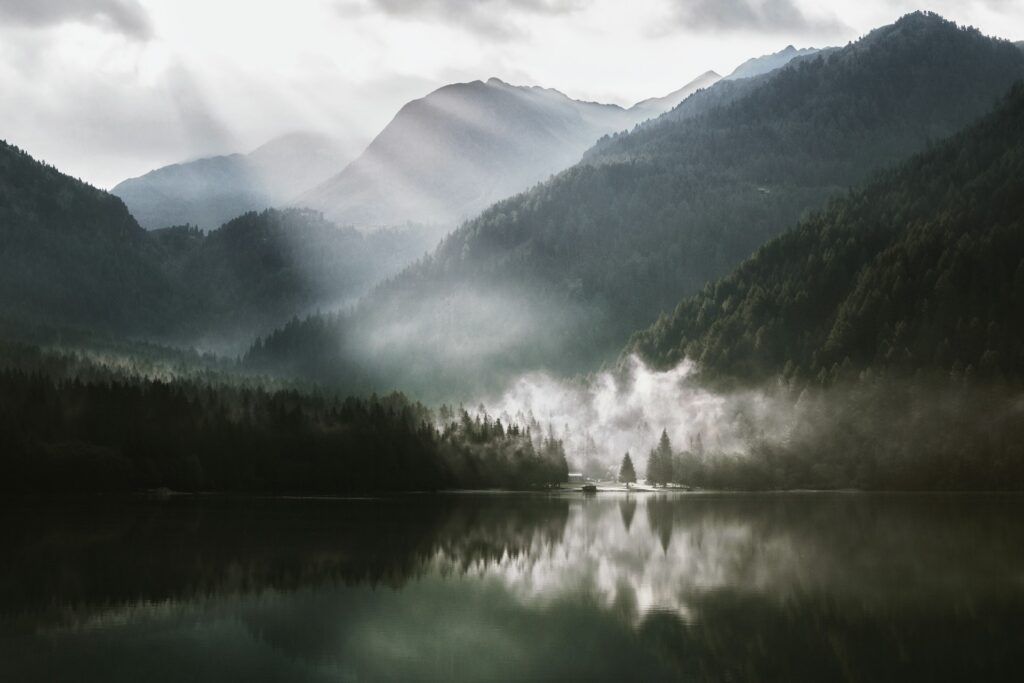Landscape photography is all about photographing the beautiful vistas that nature presents to you. It encompasses everything from mountains and meadows to deserts and waterfalls. Creating a landscape photograph that captures the beauty of nature the way you imagine it requires effort, and a good understanding of some fundamental photography concepts and terminology.
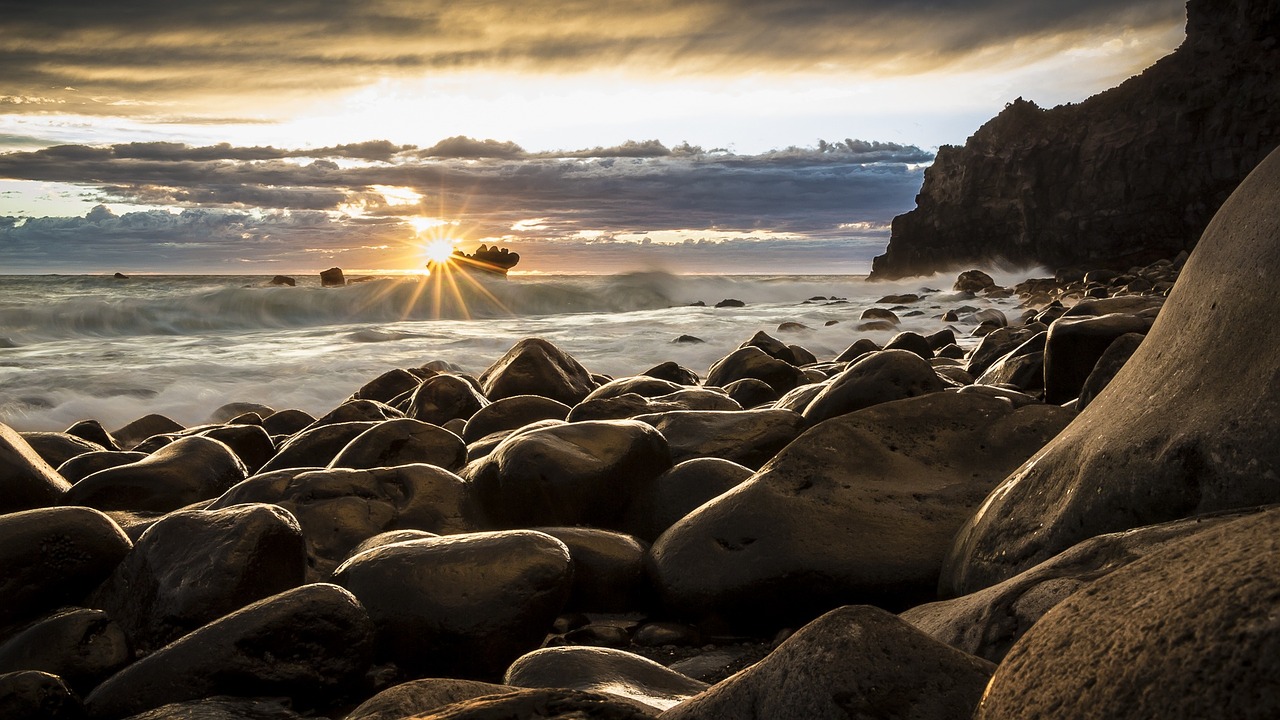
Photo by MartyNZ on Pixabay
Here is a list of some photography terms that every serious landscape photographer should have a good understanding of. Not only will it improve your chances of producing great landscape shots consistently, it will also help you get better at photography in general as most of these are equally applicable to the other genres of photography.
1. Rule of Thirds
It is one of the most common composition rules in photography, and lends itself especially well to landscape photography. Imagine a photograph that’s divided into three equal horizontal parts using two horizontal lines and likewise in the vertical direction.
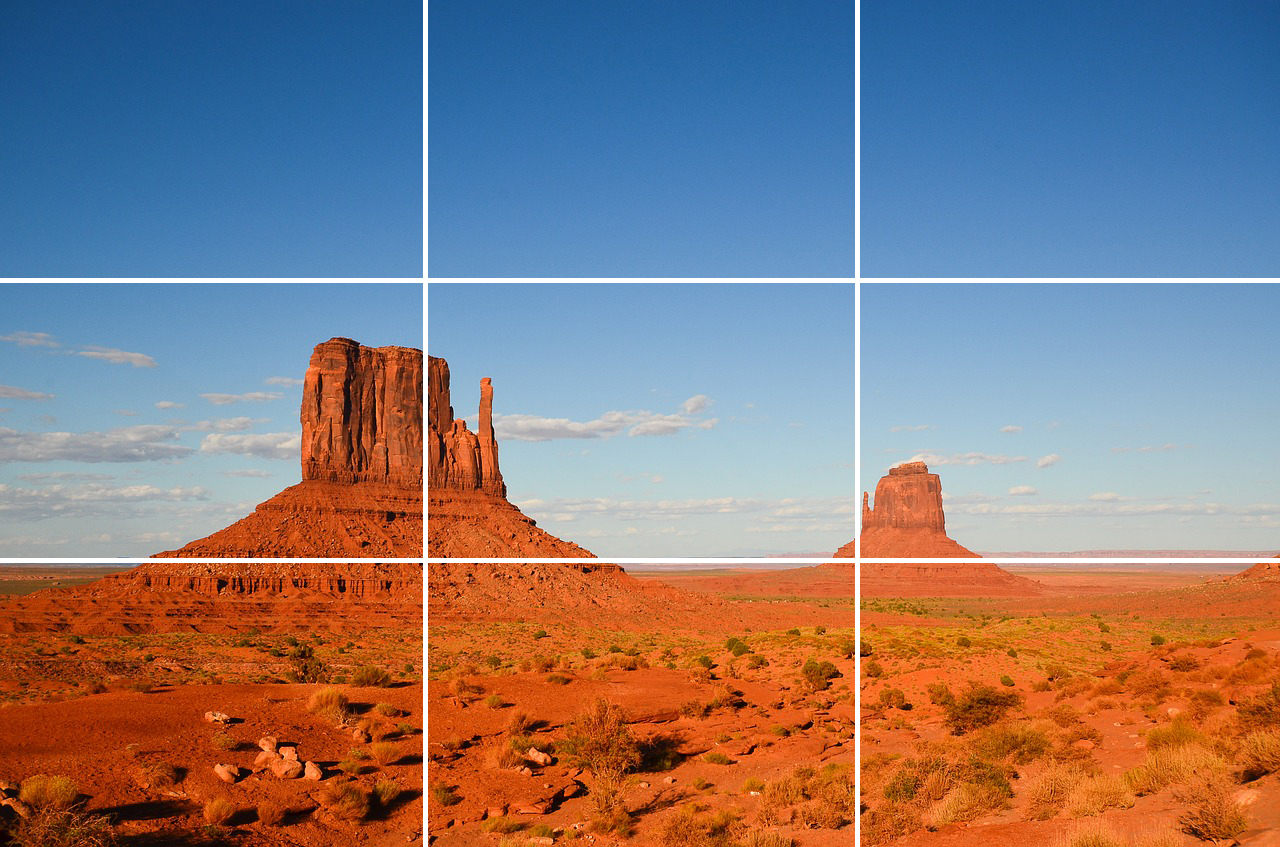
The Rule of Thirds put to use. Photo by USA-Reiseblogger on Pixabay.
The rule of thirds says that any key elements of your photo should be near those intersection points for the strongest composition. In landscape photography, you would use it by placing the horizon on either of the two horizontal lines (i.e. 1/3 land and 2/3 sky or vice versa). Always keep the horizon straight. As with all the rules, feel free to break this rule once you’ve understood it well.
2. Metering
Metering refers to the process of measuring the light from a scene you wish to photograph, either using a camera or by using a light meter, to get certain settings of aperture, shutter speed and ISO (collectively called the exposure triangle). You then use these settings to get the desired exposure in your photograph. Always shoot in the manual mode, and keep the ISO as low as possible.
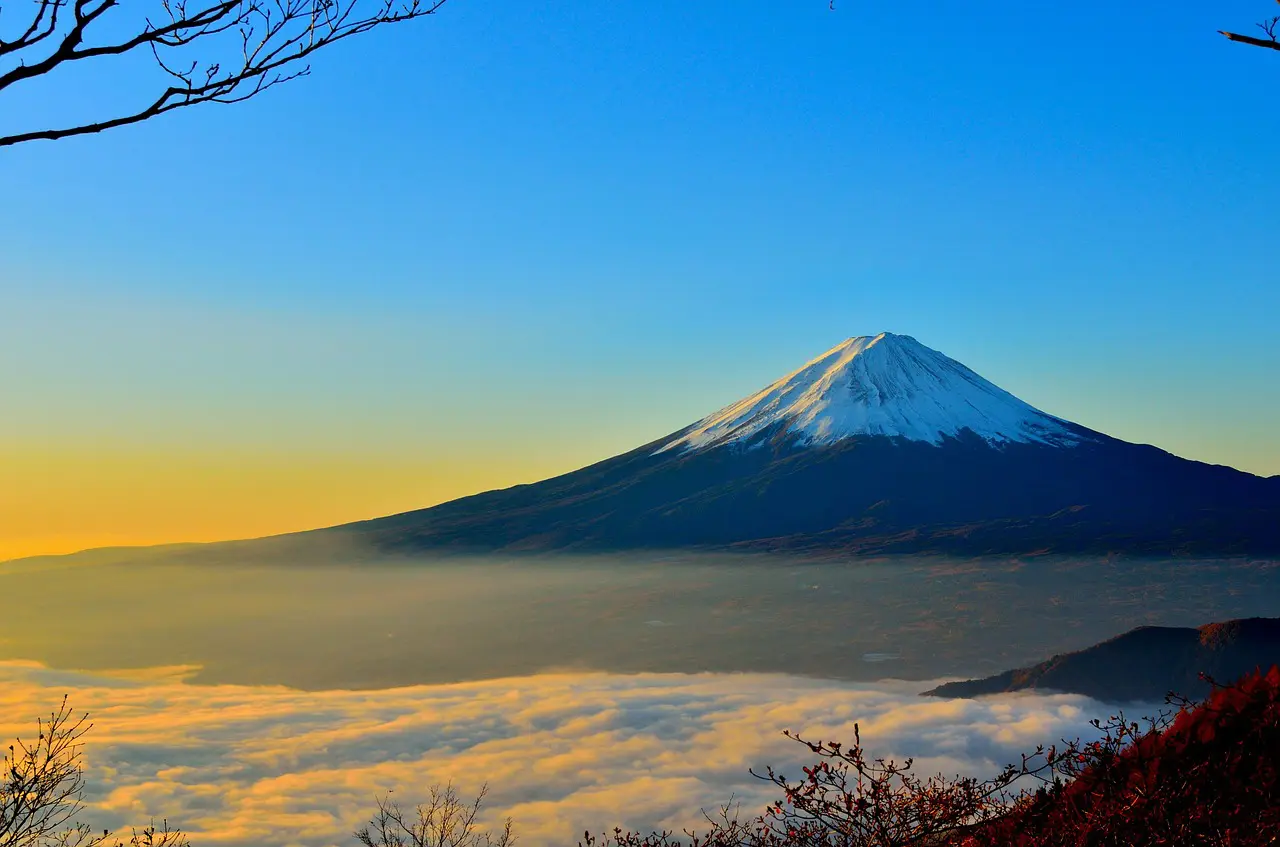
Evaluative metering has done a good job here. Photo by kimura2 on Pixabay.
In virtually all cameras, when you press the shutter release button halfway, the camera reads the light entering it and tells you of suitable settings to use. There are various metering modes available – evaluative, center-weighted and spot. For landscape photography, you would mostly use evaluative and spot.
3. Histogram
Histogram is a graphical representation of the number of pixels of each shade of gray in a photograph. It is used to check the exposure in a photo and to make necessary adjustments to the camera settings. A good exposure is one that contains detail in the darkest and the brightest regions of the photo, and is commonly depicted by a bell shaped histogram.
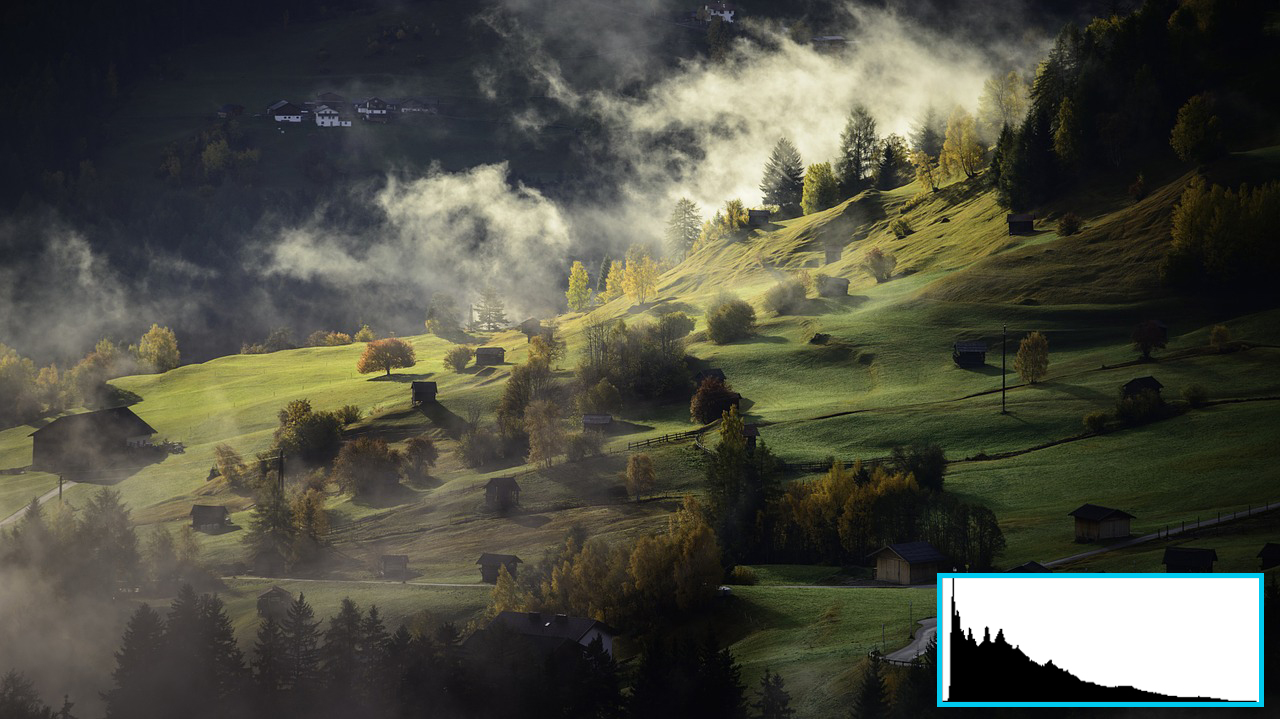
There are a lot of dark areas in the photo, which is why the histogram skews to the left. Photo by jpeter2 on Pixabay.
A histogram skewed to the right denotes overexposure and one that skews to the left conveys underexposure. In landscape photography, it may not always be possible to get a single exposure that captures details in the bright sky as well as the dark foreground. Combining different exposures into a single image using HDR (High Dynamic Range) is one way to get the perfect image. The other way would be to use a graduated ND filter.
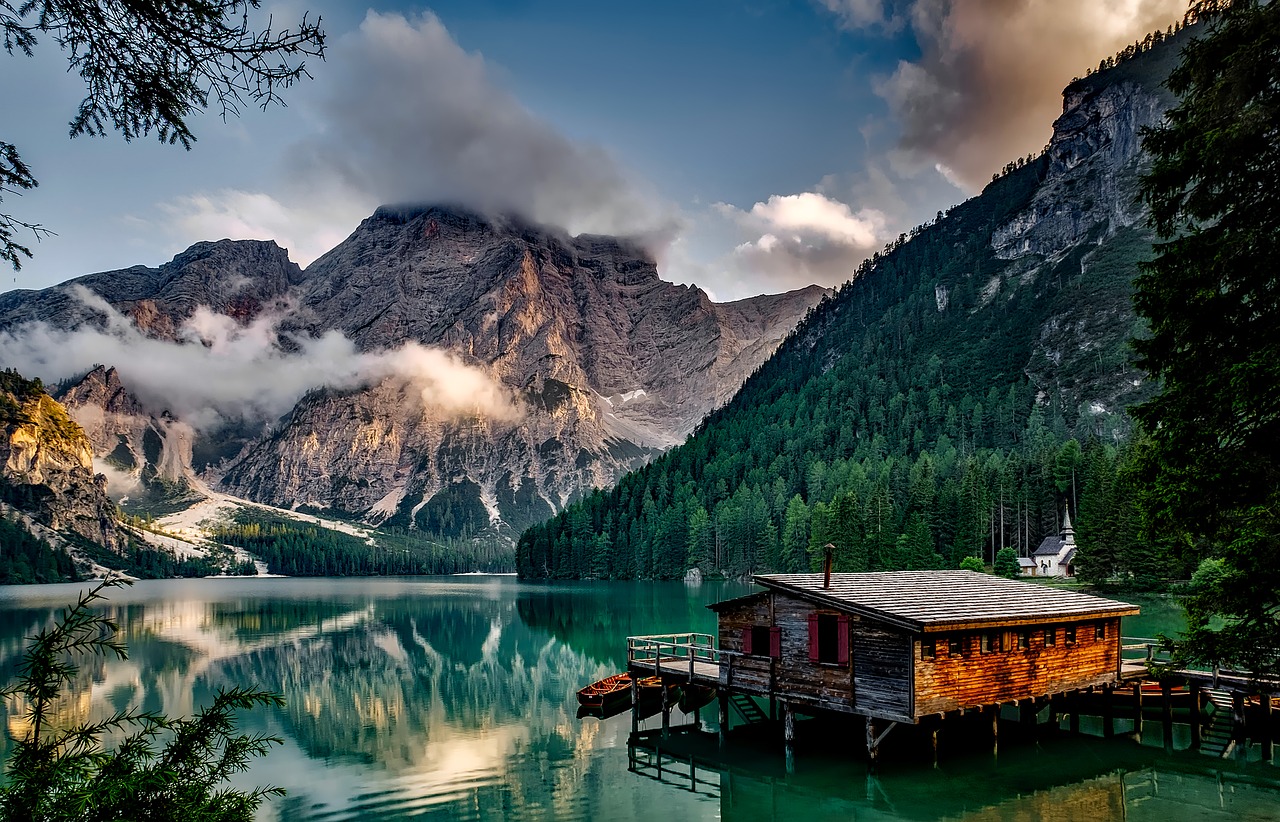
A single exposure shot of this scene would not have been able to show the details in the sky and the foreground like this HDR image does. Photo by tpsdave on Pixabay.
4. White Balance
The white balance setting takes into account the color temperature of a light source, and helps in reproducing correct colors in the photograph. An incorrect white balance introduces a color cast and can potentially ruin a shot. While some cameras allow you to manually set the white balance, there are always preset values that you can use for various light conditions like Daylight, Cloudy, Shade, Tungsten, and Fluorescent.
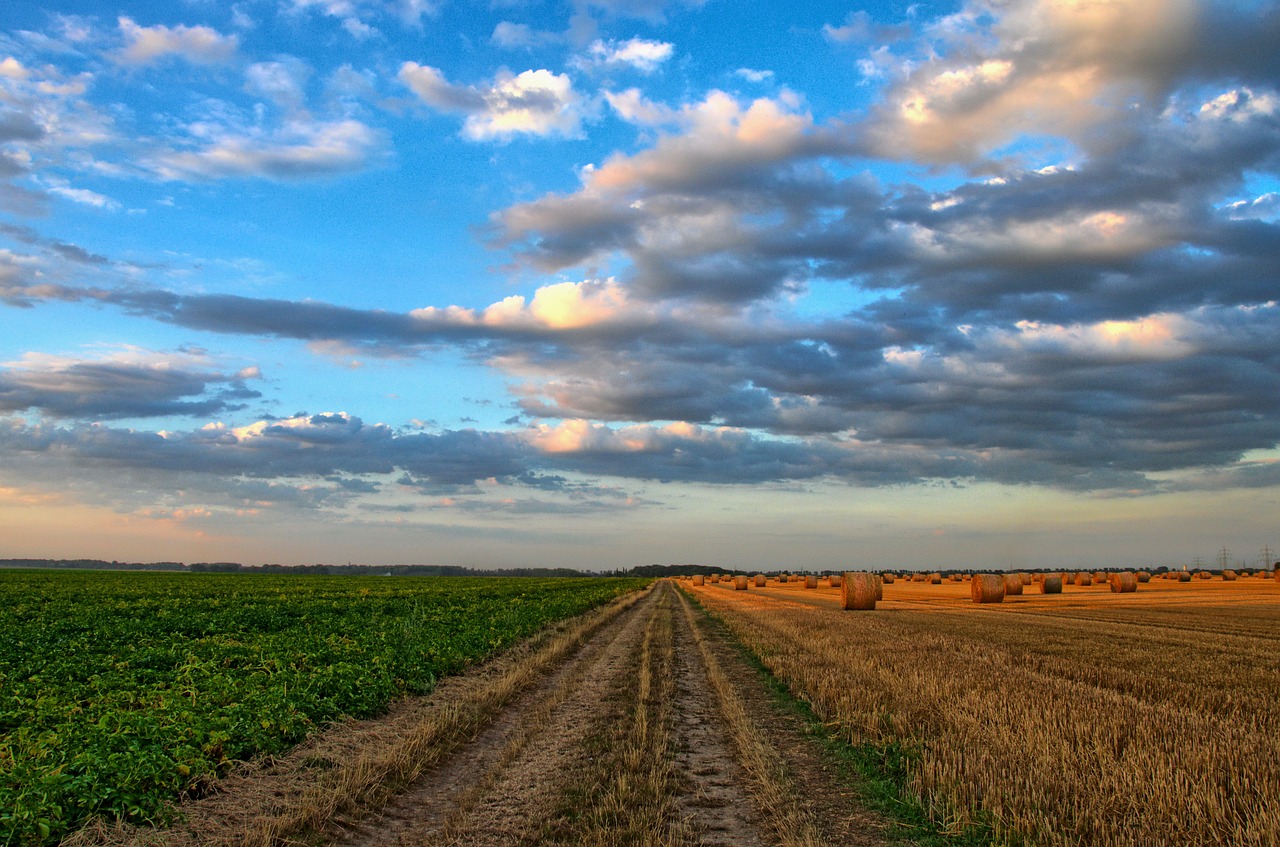
Correct white balance helps you produce correct colors. Photo by wobogre on Pixabay.
When you shoot your photographs in RAW (the digital negative format), you can set the white balance later in post processing. You can experiment with different white balance settings to see if a color cast enhances the mood of your image.
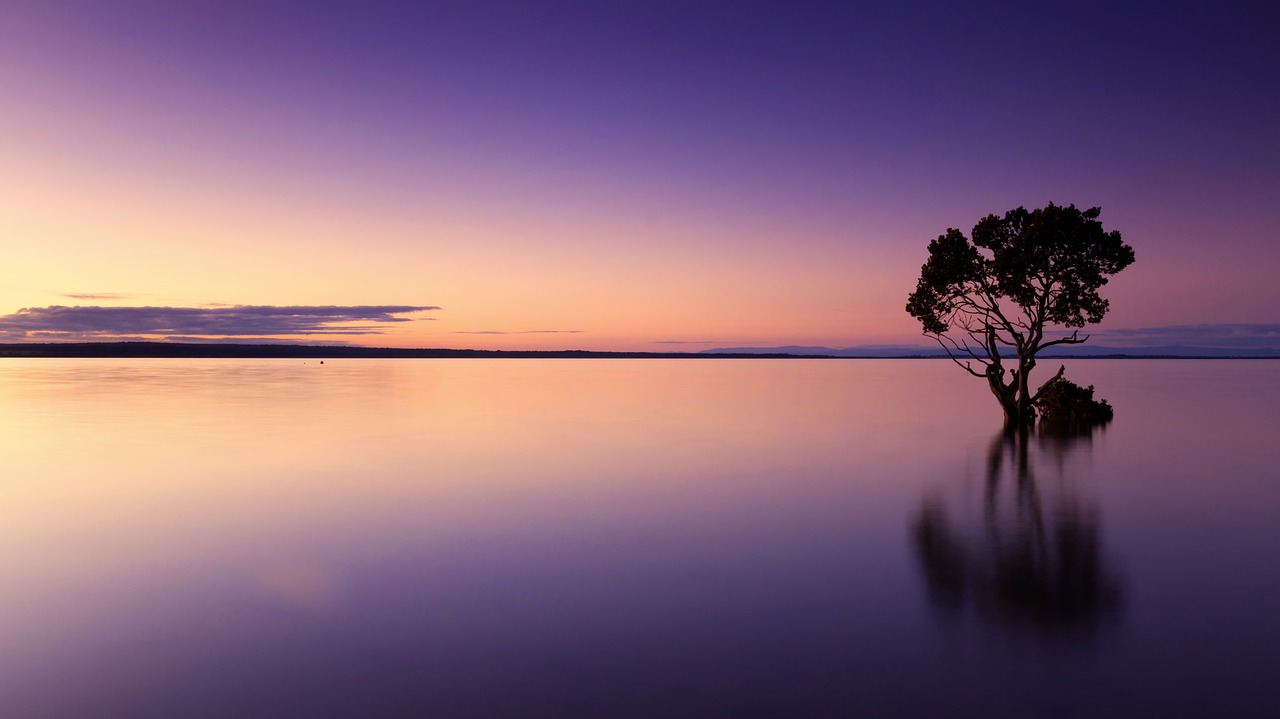
You can experiment with white balance to add a mood to an image. Photo by Cleverpix on Pixabay.
5. Hyperfocal Distance
The range of distance in your photo that appears acceptably sharp is referred to as the depth of field. In landscape photography, you would normally want to keep everything sharp, right from the foreground all the way to the background. You do this by focusing at the hyperfocal distance and it gives your image the greatest depth of field.
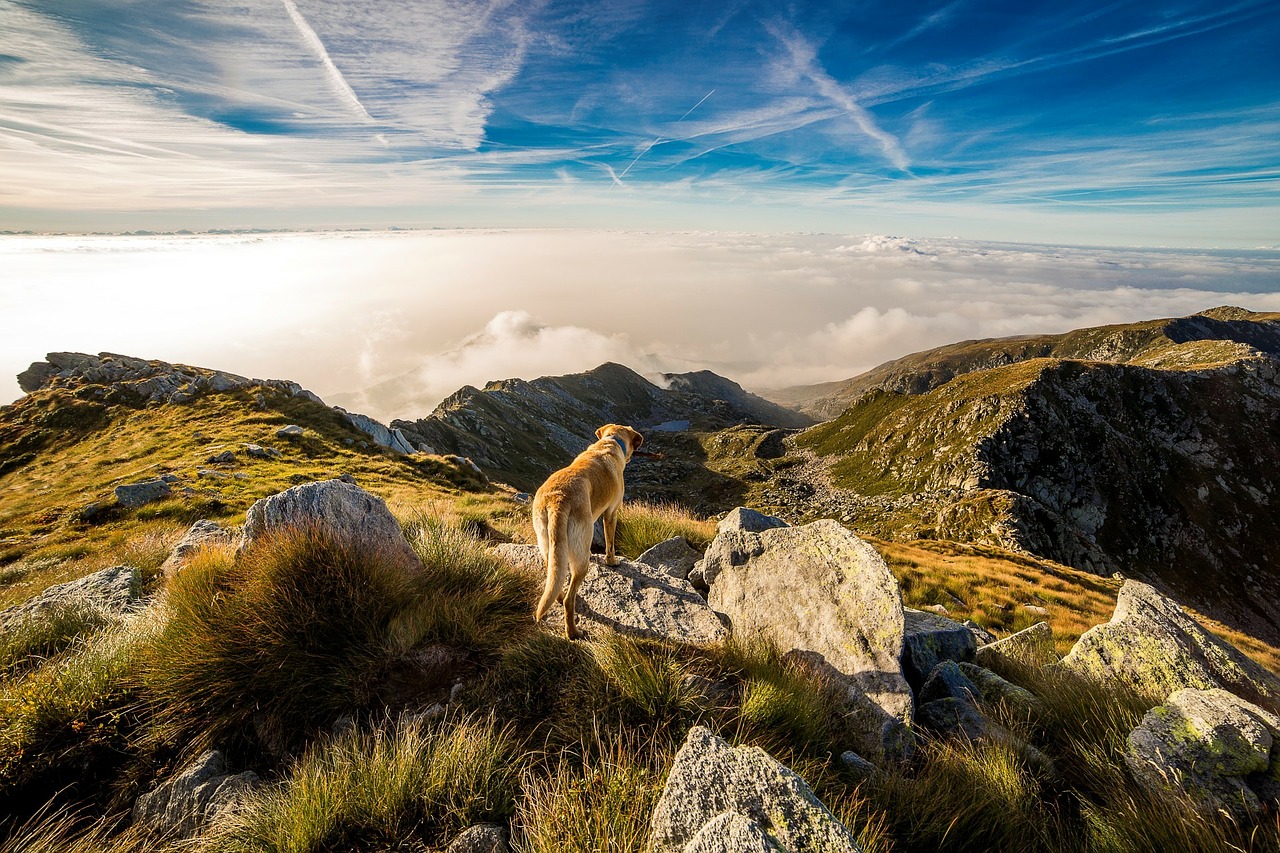
Everything from the foreground to the background is in focus when you focus on the hyperfocal distance. Photo by danfador on Pixabay.
Once you have focused on the hyperfocal distance, everything from half the hyperfocal distance to infinity will be in focus. Hyperfocal distance is affected by aperture, focal length and your camera’s sensor type. Many online websites as well as mobile phone apps are available that you can use to calculate hyperfocal distance.
Now Imagine This
You are on top of a mountain after trekking a couple of miles and you witness a beautiful sunset in front of you. The golden sky, the twittering birds, the misty mountains – everything seems to be perfect. You are really excited to capture it.
You setup your tripod, mount your camera on top of it and take a lot of shots. You come back home with great memories, and some amazing photographs. Or so you think. When you look at the photos on your computer screen, you feel that the photographs are not as amazing as you expected them to be. Perhaps it was the overexposed sky or the dull composition or maybe the partly focused image. You feel disappointed.
It has happened to me. If only I knew about metering, rule of thirds and hyperfocal distance before going on that trek, I would have been better prepared.
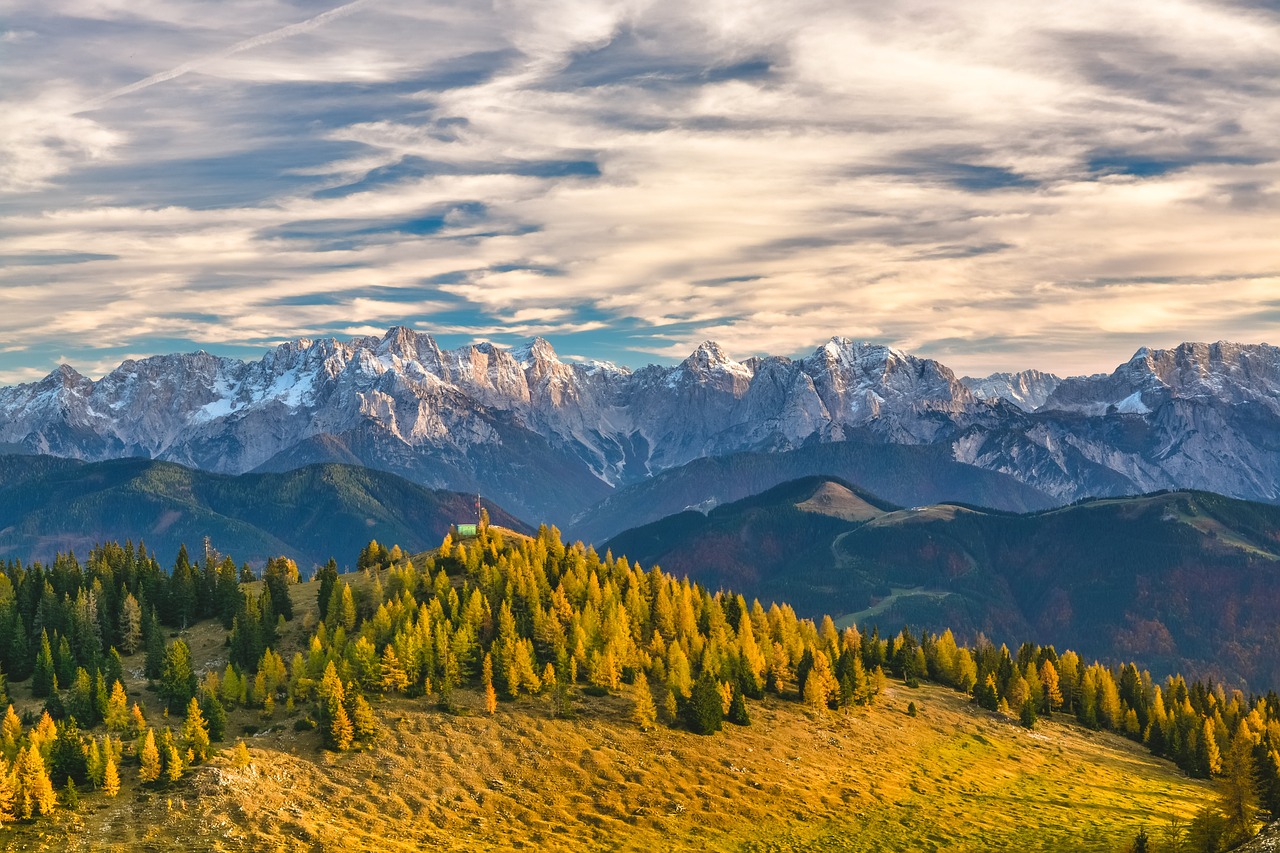
Wouldn’t you love to return from your trips with images like this? Photo by domelaci on Pixabay.
Take It To The Next Level
As with every other craft, you can get better at landscape photography with relevant knowledge and some practice.
If you would like to take your landscape shots to the next level by learning the essentials and using invaluable tips and practical advice, we have something for you – an ebook with 230-plus pages of indispensable knowledge on landscape photography. Click here to get The Complete Landscape Photography Guide.


